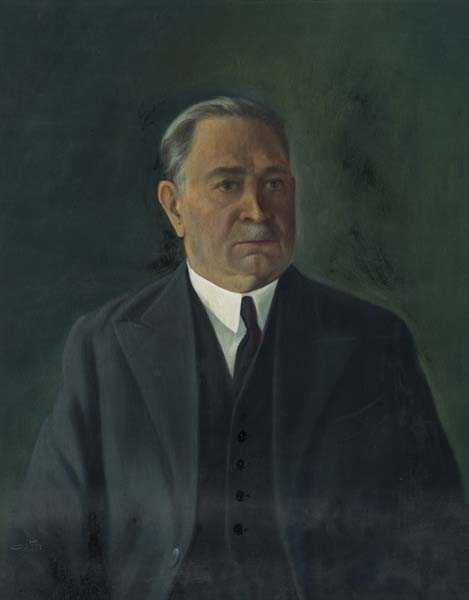About Aliakbar Sanati
Ali Akbar Sanati is an Iranian painter and sculptor, whose artworks are widely displayed in Iranian museums. A museum was even built under his name.
Ali Akbar Sanati, who was interested in studying painting and sculpture since he was a teenager, studied at Mustadrafeh Art School (The School of Fine Arts) in Tehran. He learned sculpting from professors such as Abulhasan Sediqi and started creating works from that time. In 1940, he received a degree from Mustadrafeh Art School, and in the same year, he came to Kerman and in order to pay his respects to the orphanage where he grew up, he chose some of the orphan children there as his pupils and taught them painting. Later, many of his works were collected in the same nursery and exhibited for public viewing. One of his most famous works is the "Angel of Justice" at the entrance of the Judicial Palace in Tehran.
The first appearance of Sanati in auctions dates back to 2017 in the seventh round of Tehran Auctions, where his work was sold at the price of 40 million tomans, equivalent to 10 thousand dollars.
Ali Akbar Sanati paid more attention to painting before entering the field of sculpture professionally. According to some experts, the change of his technical style from oil paint to watercolor in that historical period was considered a new development in the field of Iranian painting. Among his watercolor paintings, we can mention "Agha Seyed Hassan", "The Passion of Flight", "A World of Colors and Patterns" and "Life with Watercolor". On the other hand, Sanati is considered one of the first realist sculptors and painters of the contemporary era, who has created more than 2000 oil paintings, watercolors, stone mosaics and about 400 sculptures during several decades of artistic activity.
Ali Akbar Saneti, some of whose sculptures were destroyed during the important political events of Iran, said about his presence in the field of visual arts: "Abolhasan Khan Siddiqui led me to the field of sculpture, but unlike others who enjoy my creations, I must say they didn't bring me a happy ending and I wish my hand would not have been contaminated with mud and plaster from the beginning. It may be that these statues were destroyed once during the coup d'état of August 28 and again during the revolution because God was clearly not pleased with my work."
The Most Expensive Artwork
At Auctions
First Attendance
7 July 2017
# Attendance
4
# Artworks
4
Average Realized Price
4,164 USD
Average Min Estimate
3,090 USD
Average Max Estimate
4,310 USD
Sell-through Rate
75%
Average Growth of Artwork Worth
17.262%
Timeline
Landscape Plateau exhibition
13 December
A Selection of Works Less than 200 Million Tomans exhibition
19 September
Resize exhibition
16 August
10s of Artworks, 10s of Millions exhibition
8 March
The Artwork of Legendary Artists exhibition
9 February
In Water Color exhibition
2 February
resize exhibition
13 April
From Museum to Museum, From Kerman to Tehran exhibition
31 December
Those Trees, Those People exhibition
26 November
From Object to Figure exhibition
24 September
Small Artworks collection exhibition
11 June
Gathered exhibition
22 March
Birds exhibition
5 March
Collector 7 exhibition
5 February
No.8 auction
1 January
Collectioner 4 exhibition
29 November
The Sound of Autumn and Winter exhibition
15 November
Annual Amordad 98 exhibition
9 August
هفتمین دوره حراج تهران auction
7 July
Group exhibition exhibition
30 September
